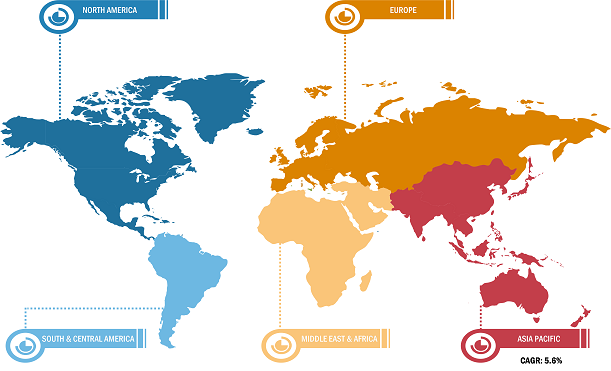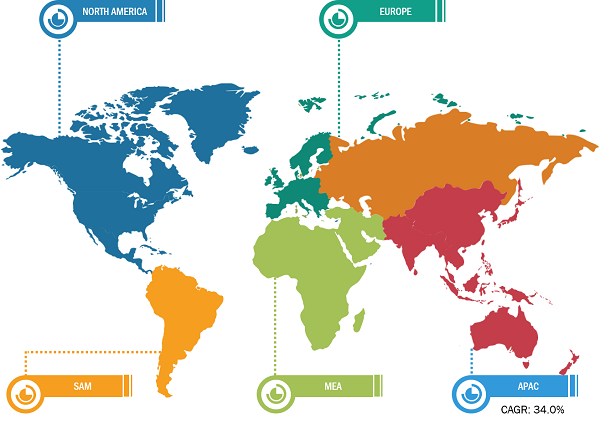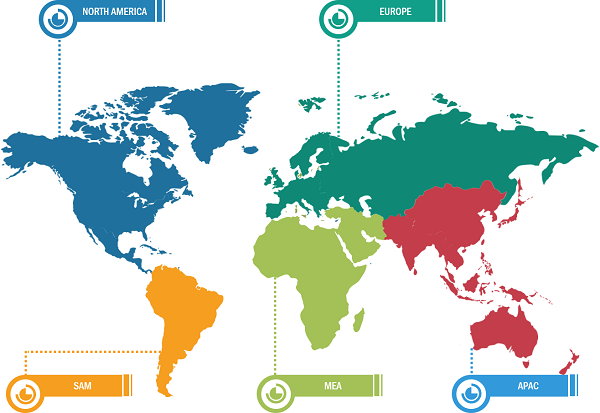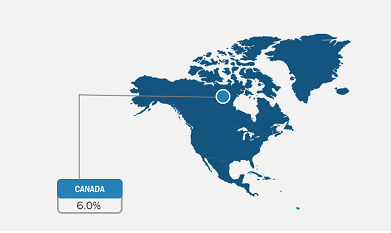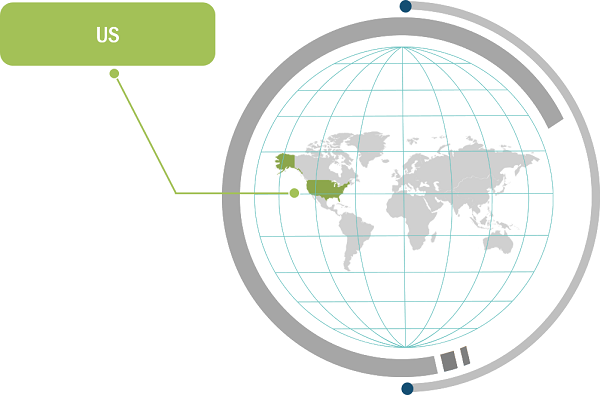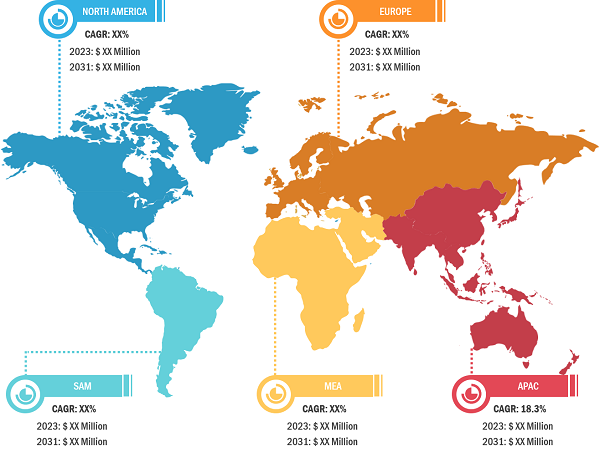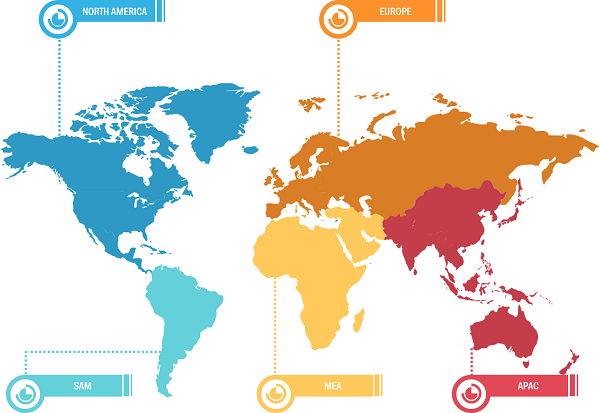
Adhesives and Sealants Market
In 2022, Asia Pacific dominated the global adhesives and sealants market. The Asia Pacific adhesives and sealants market is segmented into Australia, China, India, Japan, South Korea, and the Rest of Asia Pacific. Growing industries such as automotive, building & construction, paper & packaging, and electrical & electronics are mainly driving the adhesives and sealants market in Asia Pacific. According to a report published by the China Passenger Car Association, in 2022, Tesla Inc. delivered 83,135 made-in-China electric vehicles, indicating growth in sales of electric vehicles from 2021. Per the International Organization of Motor Vehicle Manufacturers report, in 2021, countries in Asia Pacific produced ~46.73 million units of motor vehicles. The growing automotive industry in Asia Pacific is driving the demand for adhesives and sealants.
Development of Bio-Based Adhesives
Bio-based materials are gaining traction in all fields due to their improved environmental footprint and independence from petroleum resources that come with their use. Bio-based adhesives are natural polymeric materials consisting of high molecular weight and utilize biocompatible and biodegradable polymers to join two surfaces. These polymers are composed of molecular building blocks linked together to form various large and complex structures. In recent years, there have been developments in bio-based adhesives. For instance, soy-based adhesives are developed to replace urea formaldehyde (UF) resins to avoid concerns related to formaldehyde toxicity. The adhesives formulated from soy protein exhibit desirable dry bonding strength and reduce the dependency on petroleum resins. The biobased raw materials utilized in the adhesive are produced from regenerative sources. This leads to the reduction of CO2 emissions compared to fossil raw materials in the supply chain. Hence, owing to the rising concern and awareness about the social and environmental impacts of conventional materials, manufacturers of adhesives are shifting toward environment-friendly bio-based materials, which is expected to offer lucrative opportunities for the adhesives and sealants market growth during the forecast period.

Adhesives and Sealants Market: Segmental Overview
Based on resin type, the adhesives and sealants market is segmented into adhesives (epoxy, acrylic, polyurethane, and others), and sealants (silicone sealant, urethane sealant, acrylic sealant, polysulfide sealant, and others). The adhesives segment recorded largest segmental share in 2022, and recorded highest CAGR during the forecast period. Adhesives are used to bond different substrates such as metals, plastics (thermosets and thermoplastics), composites, foams, elastomers, wood and wood products, glass and ceramics, and sandwich and honeycomb structures. Adhesives are highly used in the construction, consumer goods, packaging, and transportation industries. There are many different types of adhesives for specific conditions and applications.
Based on end-use industry, the adhesives and sealants market is segmented into automotive, aerospace, paper and packaging, building and construction, electrical and electronics, medical, and others. The adhesives and sealants market share for building and construction segment was recorded to be the largest in 2022. Adhesives and sealants for infrastructure provide substrates with various mechanical properties, including water impermeability and chemical resistance, superior adhesion, and can guarantee speedy cure to improve process efficiency. Adhesives and sealants ensure durability on roads, airports, and other areas. Adhesives and sealants bond and seal concrete, asphalt, steel, and tiles, making the structures last longer.
Impact of COVID-19 Pandemic on Adhesives and Sealants Market
Before the COVID-19 pandemic, many countries reported economic growth, whereas adhesives and sealants manufacturers invested in research to develop advanced technology and improve production efficiency. Subsequently, these factors hampered the manufacturing, delivery schedules, and sales of various goods. The chemicals & materials industry announced a slowdown of manufacturing operations and shutdown and projected a slump in adhesives and sealants sales. Thus, major companies involved in adhesives and sealants production faced the hardest hit during initial phase of the pandemic due to sudden government restrictions on the manufacturing of nonessential commodities. In 2021, several developed economies began recovering from the losses incurred in 2020 as governments of various countries announced relaxation in social restrictions. Manufacturers were permitted to operate at full capacities, which helped them cope with demand–supply gap.With economies reviving their operations, the demand for adhesives and sealants started rising globally as construction, electronics, automotive, paper & packaging, and chemicals industry resumed their operations in full capacity.
Adhesives and Sealants Market: Competitive Landscape and Key Developments
A few players operating in the global adhesives and sealants market include Henkel AG and Co KGaA, HB Fuller Company, Sika AG, 3M Co, Huntsman International LLC, Dow Inc, Wacker Chemie AG, PARKER HANNIFIN CORP, Dymax Corporation, and Astro Chemical Company Inc. Players operating in the global adhesives and sealants market focus on providing high-quality products to fulfill customer demand.
Key Developments
- In 2023, Dow Inc expanded its silicone sealant products for photovoltaic assembly, namely, DOWSIL PV Product Line with six silicone-based sealants and adhesives solutions.
- In 2023, 3M Co launched medical adhesive, that sticks to the skin for up to 28 days and is intended for use with a wide range of health monitors, sensors, and long-term medical wearables.
- In 2022, HB Fuller Co announced the purchase of Apollo. Apollo is the UK’s independent manufacturer of liquid adhesives, coatings and primers for the roofing, industrial and construction markets.
- In 2021, Dymax Corp introduced 1040-M to its MD line of adhesives for medical device assembly applications. The product is developed to be autoclave resistant for more than 100 cycles, MD 1040-M offers low water absorption (0.5%).
- In 2021, Sika AG acquired Hamatite, a Japanese based company, which provides adhesives and sealants to the various industries like automotive and construction. The company also offers various technologies such as polyurethanes, hot melts, and modified silicones.

